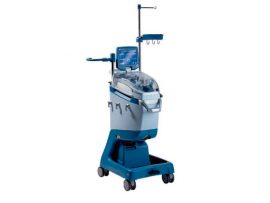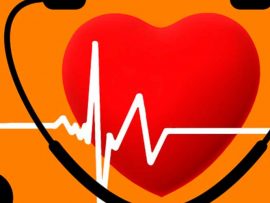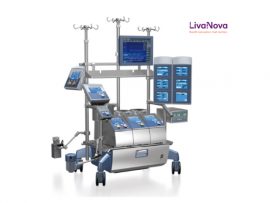Abstract Cardiogenic shock (CS) and cardiac arrest (CA) are among the most lethal complications of acute cardiovascular disease, affected by high in-hospital mortality rates. Venoarterial extracorporeal life support (VA ECLS)..
Read MoreAbstract Protamine, a highly basic protein isolated from salmon sperm, is the only clinically available agent to reverse the anticoagulation of unfractionated heparin. Following intravenous administration, protamine binds to heparin..
Read MoreAbstract The development of mechanical circulatory support (MCS) has been rapid, and its use worldwide in patients with cardiogenic shock is increasingly widespread. However, current statistical data and clinical research..
Read MoreAbstract Importance Prone positioning may improve outcomes in patients with severe acute respiratory distress syndrome (ARDS), but it is unknown whether prone positioning improves clinical outcomes among patients with ARDS who..
Read MoreAbstract Advanced Cardiac Life Support (ACLS) guidelines recommend a standardized approach to manage cardiac arrest, including cardiopulmonary resuscitation (CPR), defibrillation, and administration of drugs such as epinephrine [1]. Ultrasound (US)..
Read MoreAbstract Background The quality of a myocardial protection of a single-dose del Nido cardioplegia versus multiple dose blood-based cardioplegia on myocardial injury, outcomes and operative times in patients undergoing minimally..
Read MoreAbstract The contact between the blood and the surface of medical materials causes a series of rejection reactions. In this process, the plasma protein is adsorbed to the surface of..
Read MoreAbstract OBJECTIVES The primary objective was to predict bleeding after cardiac surgery with machine learning using the data from the ANZSCTS (Australia New Zealand Society of Cardiac and Thoracic Surgeons)..
Read MoreAbstract Background Concerns regarding the safety and availability of transfused donor blood have prompted research into a range of techniques to minimise allogeneic transfusion requirements. Cell salvage (CS) describes the..
Read MoreAbstract Objectives The aim of this analysis was to compare the effect of extubating in the operating room (OR) versus and the (ICU) among patients undergoing (CABG). Design A retrospective . Setting Ten..
Read MoreAbstract The coronavirus disease-2019 (COVID-19) pandemic has placed many restrictions on medical care. The timing of surgical treatment has been particularly affected, with patients experiencing delayed operation dates. This report..
Read MoreAbstract An updated systematic review with meta-analysis comparing perioperative prophylactic administration of corticosteroids with placebo in cardiac surgeries using was conducted. The Cochrane Central Register of Controlled Trials and MEDLINE (via PubMed)..
Read MoreAbstract Background Perioperative stroke after cardiac surgical procedures carries significant morbidity. Dual with electroencephalography (EEG) and somatosensory-evoked potentials detects cerebral hypoperfusion and predicts postoperative stroke in noncardiac procedures. We further evaluated..
Read MoreAbstract To examine associations of pulmonary artery catheter (PAC) use with in-hospital death and hospital length of stay (days) overall and within subgroups of hospitalized cardiac surgery patients. Secondary analyses..
Read MoreAbstract Background Inadequate communication during transitions of care is a major and safety vulnerability. In 2013 Massachusetts General Hospital (MGH) embarked on a comprehensive training program using a standardized handover system..
Read MoreAbstract Background High sensitive cardiac troponin T (hsTnT) is a widely used biomarker of myocardial injury. Along with other high sensitive troponins, HsTnT can predict mortality in both cardiac and..
Read MoreAbstract Introduction Extracorporeal membrane oxygenation (ECMO) circuits may be changed during the run for multiple reasons; however, these circuit changes may be associated with adverse events. Predictors for undergoing a..
Read MoreAbstract Biological evidence supports plasma methemoglobin as a biomarker for anemia-induced tissue hypoxia. In this translational planned substudy of the multinational randomized controlled transfusion thresholds in cardiac surgery (TRICS-III) trial,..
Read MoreAbstract Background Adults undergoing heart surgery are particularly vulnerable to respiratory complications, including COVID‐19. Immunization can significantly reduce this risk; however, the effect of cardiopulmonary bypass (CPB) on immunization status..
Read MoreAbstract Objective To report early outcomes of blood conservation in neonatal open-heart surgery. Methods Ninety-nine patients undergoing neonatal open-heart surgery during the implementation of a blood conservation program between May..
Read MoreAbstract The purpose of patient safety work is to reduce avoidable patient harm. This requires us to slay dragons—to eliminate or at least mitigate risks to patients. Instead, current practice focuses..
Read MoreAbstract Objectives To compare changes in vasopressor requirements and hemodynamic responses after hydroxocobalamin or methylene blue administration for vasoplegic shock (VS). Design Retrospective cohort analysis. Setting Single-center, academic medical center...
Read MoreAbstract Purpose Investigate inhaled nitric oxide’s influence on mortality rates, mechanical ventilation and cardiopulmonary bypass duration, and length of stay in the intensive care unit and hospital when administered during..
Read MoreAbstract Objective The authors performed a systematic review to evaluate the effect of pharmacologic therapy on pulmonary hypertension in the perioperative setting of elective cardiac surgery (PROSPERO CRD42023321041). Design Systematic..
Read MoreAbstract Background Training nursing students on quality and patient safety (PS) is crucial to ensuring safe healthcare practices given the key role nurses play on the healthcare team. The aim..
Read MoreAbstract The purpose of this report was to estimate the additional annual cost to the U.S. healthcare system attributable to preventable medication errors (MEs) in the operating room. The ME..
Read MoreAbstract Background Little evidence exists on the relationship between the estimated heparin sensitivity index (HSI) based on commonly available clinical and laboratory data and observed HSI in the adult population...
Read MoreAbstract Introduction Cardiovascular disease is the leading cause of pregnancy-related mortality, and it has gradually increased over time; this rise has been attributed to numerous reasons including the growing number..
Read MoreAbstract Cardiopulmonary bypass (CPB) has revolutionized cardiac surgery but poses challenges such as hemodynamic instability and adverse clinical outcomes. Achieving optimal perfusion during CPB ensures adequate oxygen delivery to vital..
Read MoreAbstract Refractory vasodilatory shock (RVS) following massive calcium channel blocker (CCB) overdose remains a challenging clinical entity. Peripheral venoarterial extracorporeal membrane oxygenation (ECMO) has proven useful in several cases of..
Read More
















